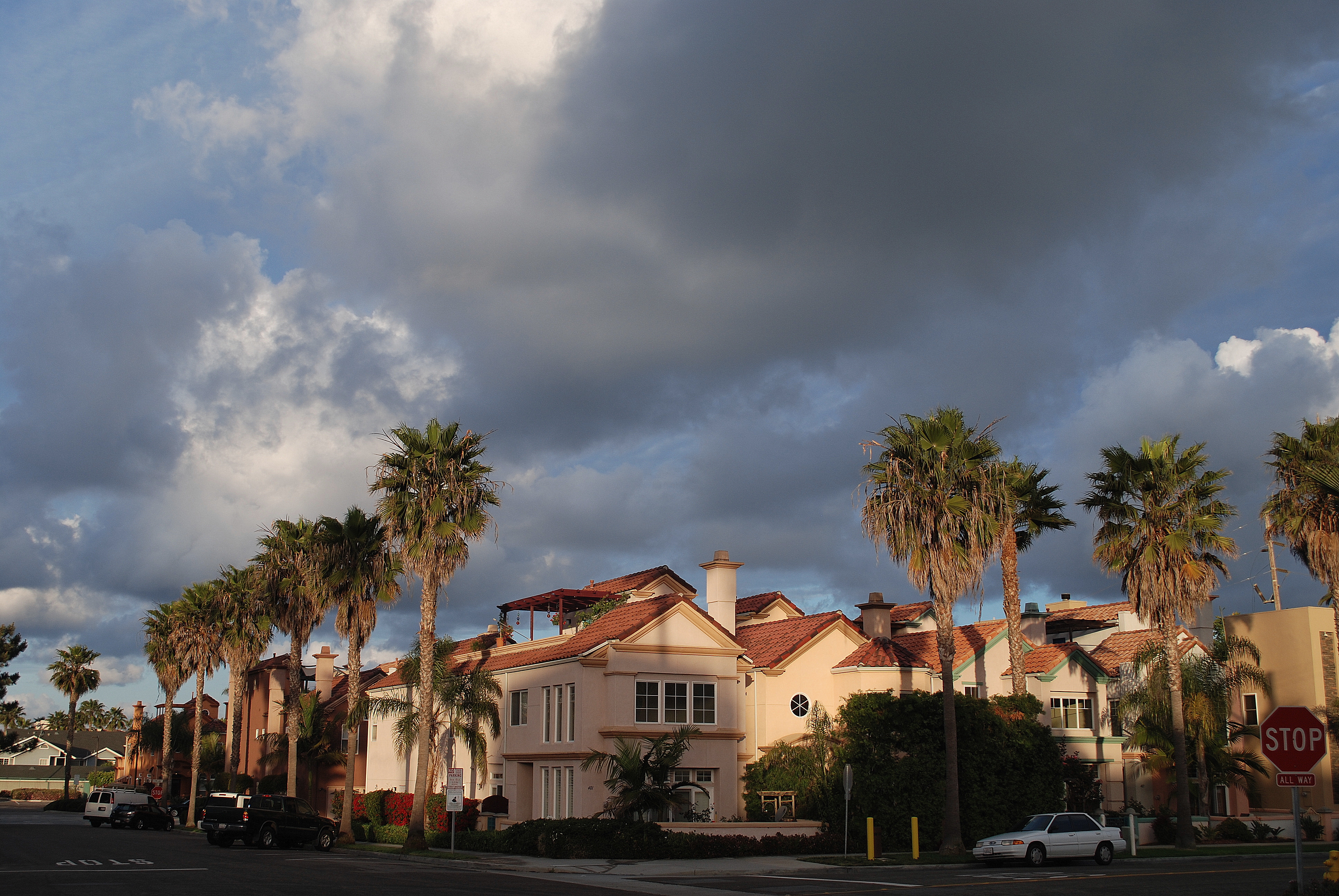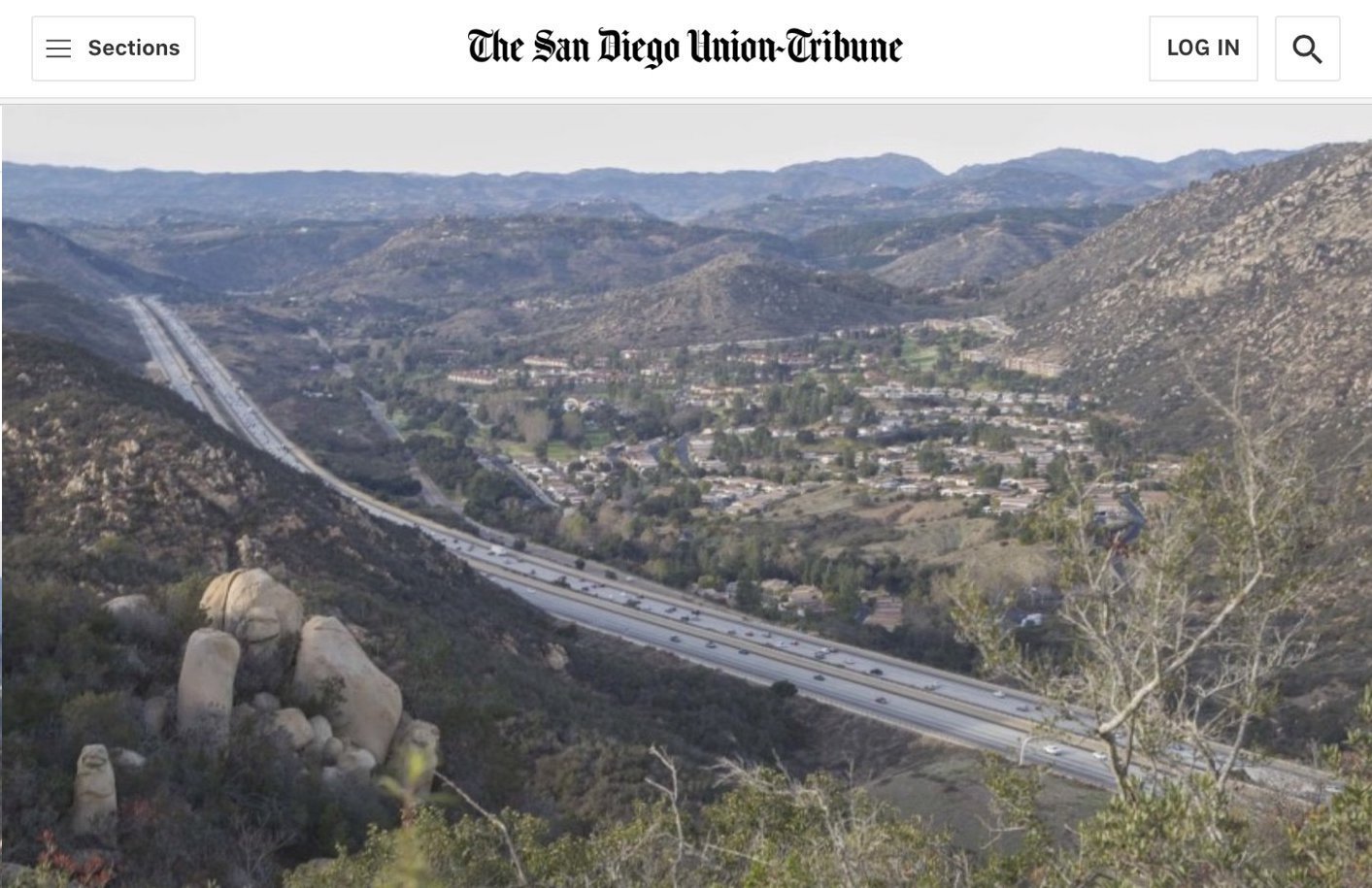Valley Center (District 5) at Sunset, Flickr User: Sharon Tate Soberon
Grow the San Diego Way focuses on land use and housing in the San Diego region, so we’ve put together a series on the 2020 Elections from a land use and housing perspective. Initially, we will focus on the County Board of Supervisors who are instrumental in helping decide land use patterns around the region and are the key to keeping sprawl in check as they oversee the rural, unincorporated areas of the County. This will be an ongoing series informed by research, interviews with candidates and stakeholders in the various districts. We may do a series on other races as well. Check back regularly as we dig deeper into their positions, policies and approaches with an emphasis on smart growth.
Part 1: A quick primer to the 2020 BOS Elections
Why are we talking about the 2020 elections now?
Well, because the political season is upon us — and sooner than usual due to an earlier primary for California. Former Governor, Jerry Brown, signed a bill in 2017 to move our primary to March of 2020, three months earlier than normal, so that California could have more influence in deciding presidential candidates. This means ballots will be mailed February 3rd, and candidates should already be well on their way to making their case to the voters by end of this year. Since our focus is land use, housing and environment we are going to dig into the positions of the various candidates for office to gain a clearer understanding of their views on our favorite topics. From smart growth to preventing sprawl we will try to get a clear read on their perspective so we can all be more informed voters.

Times they are a-changin’ on the BOS
For those of us in the San Diego region, the Board of Supervisors has gone through a major shift. Measure B, passed in 2010, implemented a two-term limit on the Board, putting a shelf life of 8 years on the existing board. At the time, the entire board had been in office since the 90s and reelections were virtually guaranteed. The Board elections, traditionally under the radar, did not generate much media interest for many years. This changed in 2016 when Kristin Gaspar challenged David Roberts, a Democrat in District 3, who had recently replaced Pam Slater-Price, herself having recently retired after a 20 year run. Gaspar narrowly won, as a Republican in a purple district1 with unprecedented support from the Building Industry Association and related interests, which underscores the importance of land use issues in the BOS portfolio.

In 2018, Ron Roberts and Bill Horn, both Supervisors with over 20 years of tenure, termed out, opening up a path in Districts 4 and 5 and kicking off a Board race that garnered a lot of attention (and money). For the first time in almost a generation, a majority of the Board would be composed of Supervisors with less than two years of experience. Nathan Fletcher (a Democrat) and Jim Desmond (a Republican) won those seats, kicking off a new era in County government. Now, for 2020, there are two seats open again (Districts 1 and 2, held by Greg Cox and Dianne Jacob) and multiple challengers have arisen for District 3 (held by Kristin Gaspar). So, the 2020 election will complete the entire turnover of the board, with major implications on the direction of housing and land use policies in the County.
In Part 2, we will look at why the Board of Supervisors are such an important office when it comes to land use and housing. Their decisions can reshape large portions of the County through a simple 3 to 5 vote majority. Continue to Part 2: A primer on land use and the Board of Supervisors
Photo courtesy of Flickr User: Sharon Tate Soberon, used with Creative Commons license



